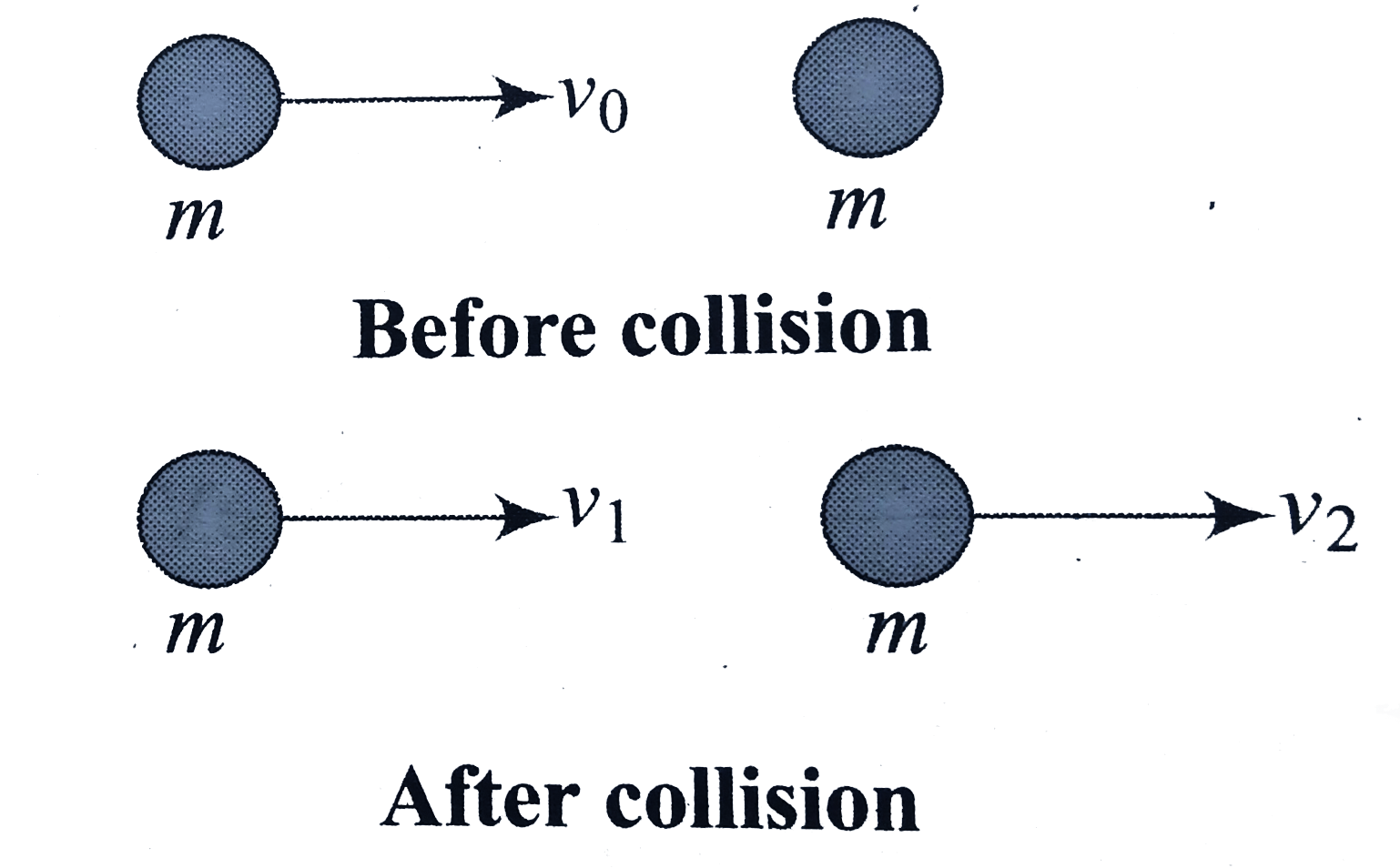A hydrogen atom having kinetic energy E collides with a stationary hydrogen atom. Assume all motions are taking place along the line of motion of the moving hydrogen atom. For this situation, mark out the correct statement (s).
For E≥20.4eV only, collision would be elastic.
For E≥20.4eV only, collision would be inelastic.
For E=2.4eV only, collision would be perfectly inelastic.
For E=18eV the KE of initially moving hydrogen atom after collisition is zero.
The correct Answer is:B, C, D
Let collisition between two atoms be an elastic one . From momentum conservation, mv0=mv1+mv2
 from energy conservation,
from energy conservation,
mv212+mv222−mv202=−ΔE
where ΔE is the energy absorbed by the initally stationary atom to changes its state.
Solving above equation, we get
(v1−v2)2=v20=−4ΔEm
For collision to be inelastic collisition, (v1=v2)2 ge 0: a real quantity [equal to sign for perfect inelastic collision.]
The minimum value of ΔEis10.2eV, so for collision inelastic E≥20.2eV
For perfectly inelastic collision v1=v2 and hence E=20.4eV for E=18eV, the collisition is elastic one and as masses are the same , velocity would be interchanged during collision.
Topper's Solved these Questions
- ATOMIC PHYSICSBook:CENGAGE PHYSICSChapter:ATOMIC PHYSICSExercise:Multiple Correct
Explore 13 Videos
- ATOMIC PHYSICSBook:CENGAGE PHYSICSChapter:ATOMIC PHYSICSExercise:Linked Comprehension
Explore 62 Videos
- ATOMIC PHYSICSBook:CENGAGE PHYSICSChapter:ATOMIC PHYSICSExercise:Subject
Explore 17 Videos
- ALTERNATING CURRENTBook:CENGAGE PHYSICSChapter:ALTERNATING CURRENTExercise:QUESTION BANK
Explore 65 Videos
- ATOMSBook:CENGAGE PHYSICSChapter:ATOMSExercise:QUESTION BANK
Explore 40 Videos
Similar Questions
An electron in an hydrogen atom has total energy of −3.4eV. Choose the correct statement (s):
View SolutionSuppose a moving hydrogen atom makes a head on inelastic collision with a stationary hydrogen atom. Before collision, both atoms are ground state and after collision, they move together. What is the minimum velocity of the moving hydrogen atom if one of the atoms is to be given the minimum excitation energy after the collisions? Take mH=1.0078amu.1.66×10−27kg.
View Solution
Knowledge Check
An electron of kinetic enregy K collides elastically with a stationary hydrogen atom is the ground state. Then,
AK>13.6eVBK>10.2eVCK<10.2eVDdata insufficientIn hydrogen atom, the energy of second shell eΘ
A−5.44×10−19JB−5.44×10−19KJC−5.44×1019CalD−5.44×10−19ergTotal energy of electron in nth stationary orbit of hydrogen atom is
A13.6n2JouleB13.6n2eVC−13.6n2eVD−13.6n2Joule
An electron with kinetic energy =E eV collides with a hydrogen atom in the ground state. The collision will be elastic
View SolutionAn electron with kinetic energy =E eV collides with a hydrogen atom in the ground state. The collision will be elastic
View SolutionTotal energy of an electron in nth stationary orcit of hydrogen atom can be obtained by
View SolutionThe kinetic energy of electron in the first Bohr orbit of the hydrogen atom is
View SolutionA moving hydrogen atom makes a head-on collision with a stationary hydrogen atom. Before collision, both atoms are in ground state and after collision they move together . What is the minimum KE of an atom, such that one of the atoms reaches one of the excitation state.
View Solution

